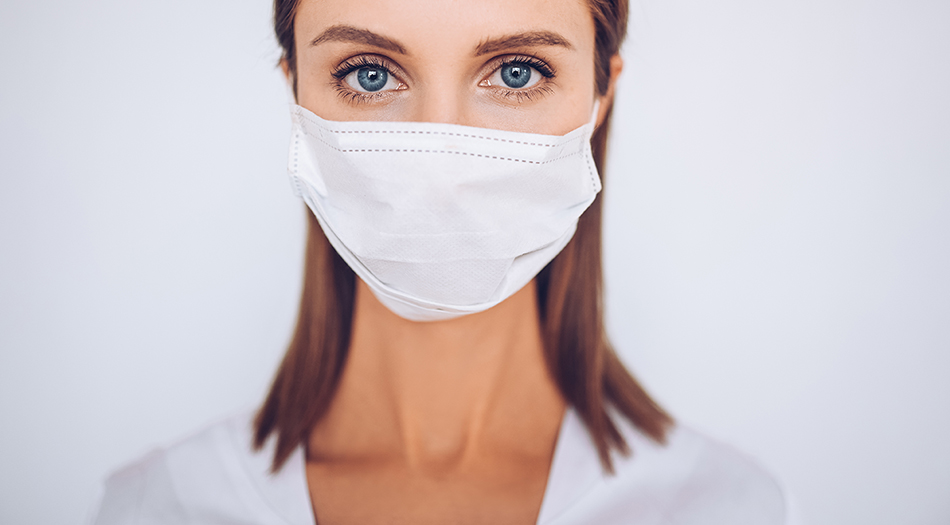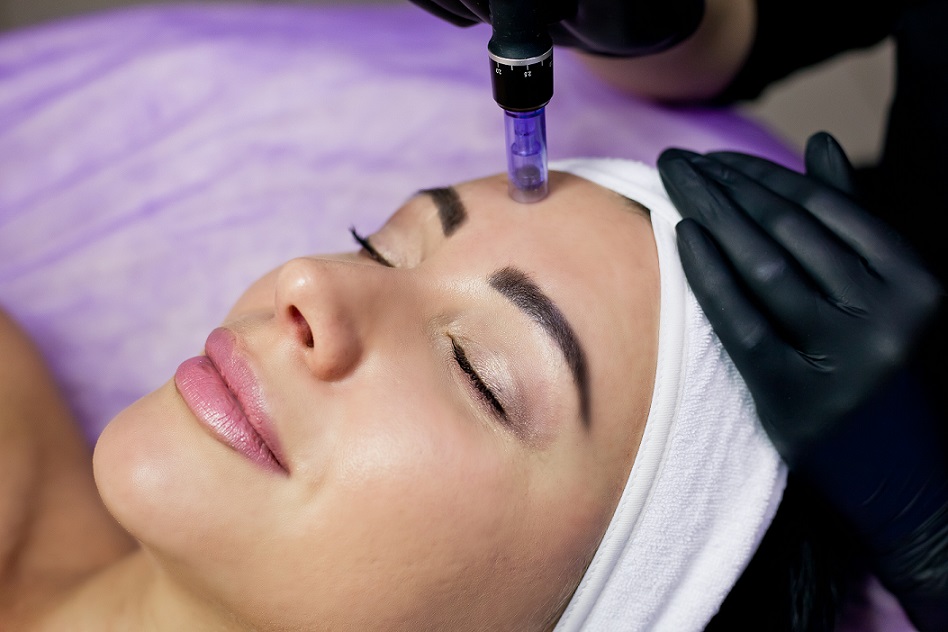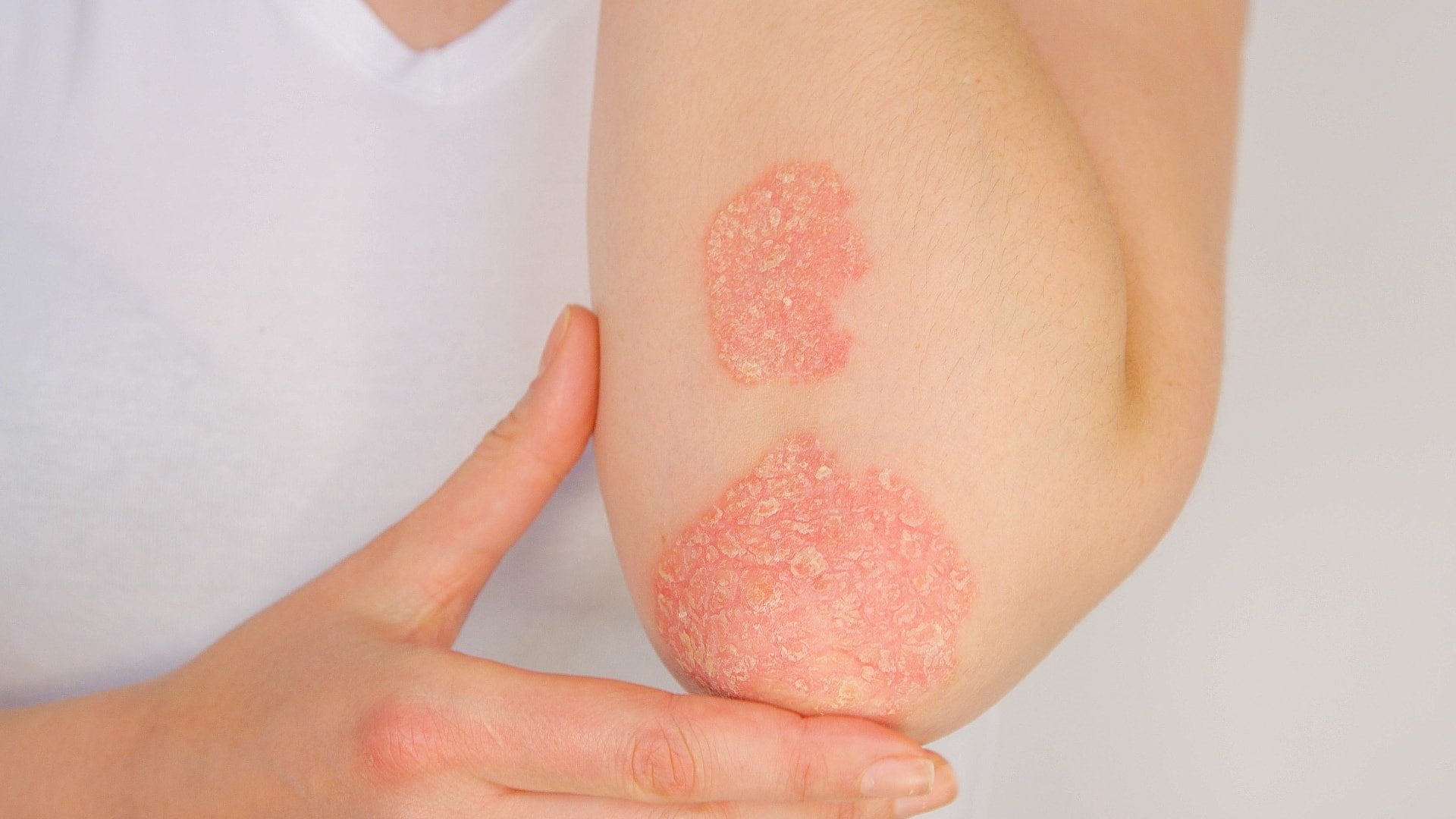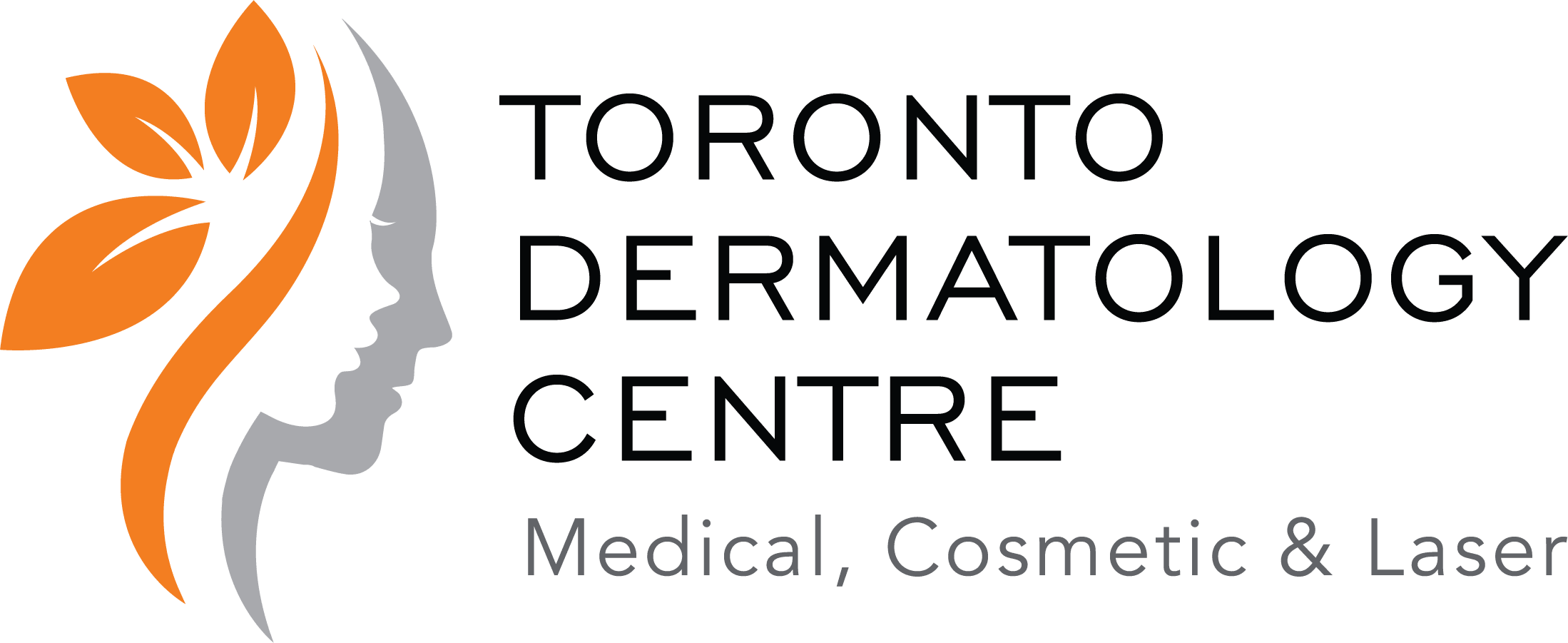Category: Uncategorized
Wearing a mask can be hard on your skin
Gentle skin care can prevent your mask from causing skin problems.
Masks play a vital role in reducing the spread of the coronavirus. Masks can also be hard on your skin, causing problems that range from acne and peeling skin to rashes and itchiness. To help prevent skin problems from developing under your mask, board-certified dermatologists recommend these nine tips.
1. Cleanse and moisturize your face daily. Gentle skin care can prevent skin problems. When washing your face, use a mild, fragrance-free cleanser and follow these steps, Face washing 101.
Dry skin is a common face mask skin problem. Applying moisturizer adds a protective layer that can reduce dryness.
You want to apply moisturizer immediately after washing your face. To get the most benefit from a moisturizer, board-certified dermatologist Carrie L. Kovarik, MD, FAAD, recommends using a moisturizer with one of the following ingredients:
-
- Ceramides
- Hyaluronic acid
- Dimethicone (which can also create a barrier that helps reduce irritated skin)
You can prevent breakouts from your moisturizer by using a moisturizer formulated for your skin type. When selecting moisturizer, follow this guide:
-
- Oily skin (or when weather is hot, humid): Gel moisturizer
- Normal or combination skin: Lotion
- Dry to very dry skin: Cream
If you have acne or tend to break out, you can still use a gel moisturizer.
2. Protect your lips by applying petroleum jelly. Dry skin and chapped lips are common face mask skin problems. You can prevent chapped lips by applying petroleum jelly to your lips:
-
- After washing your face
- Before you put on your mask
- Before bed
To prevent breakouts, take care to apply the petroleum jelly only to your lips.
3. Skip the makeup when wearing a mask. Beneath a mask, makeup is more likely to clog your pores and lead to breakouts. If makeup is necessary, use only products labeled “non-comedogenic” or “won’t clog pores.”
4. Avoid trying new skin care products that can irritate your skin. Wearing a mask for even a short time can make your skin more sensitive. To reduce skin problems, avoid trying harsh products, such as a chemical peel, exfoliant, or retinoid, for the first time, says board-certified dermatologist Daniela Kroshinsky, MD, MPH, FAAD.
5. Use less of certain skin care products if your face becomes irritated. When you cover your face with a mask, some skin care products that you’ve used in the past may irritate your skin. If this happens, Dr. Kroshinsky recommends cutting back on products that can irritate your skin, such as:
- Leave-on salicylic acid
- Retinoid you apply to your face
- Aftershave
6. Wear the right mask. To reduce skin problems, look for masks that offer the following:
- A snug, but comfortable fit
- At least two layers of fabric
- Soft, natural, and breathable fabric, such as cotton, on the inside layer that rests against your skin
Wearing a mask that offers a snug, but comfortable fit helps to protect you and others from the coronavirus. You want a snug fit across your nose, on the sides, and under your chin.
A snug, comfortable fit also reduces skin problems. If the mask feels too tight or slides around on your face, it can irritate your skin. You’re also more likely to adjust a poorly fitting mask. When you touch your mask, you can transfer germs to your mask and your face.
The fabric is also important. Avoid synthetic fabrics, such as nylon, polyester, and rayon on the the layer that rests against your skin. These are more likely to irritate your skin and cause breakouts.
For more tips on selecting a face mask to prevent the spread of COVID-19, visit the Centers for Disease Control and Prevention at CDC.gov/coronavirus.
- Take a 15-minute mask break every 4 hours. Health care workers on the frontlines of the coronavirus pandemic have found that this helps save their skin. Of course, only remove your mask when it’s safe to do so and after washing your hands.Safe places to remove your mask include:
- Outdoors, when you can stay at least six feet away from people
- Inside your car when you’re alone
- At home
- Wash your cloth masks. Many health care organizations now recommend that you wash a cloth mask after each use. Washing it also removes oils and skin cells that collect inside the mask, which could lead to a skin problem.You can wash a cloth mask in a washing machine or by hand. Both ways remove germs and other particles. Just be sure to:
- Follow the washing instructions on each mask.
- Wash the masks in hot water unless the instructions say otherwise.
- Use a fragrance-free, hypoallergenic laundry detergent.
After washing your mask, check its shape. If a mask no longer fits snugly (and comfortably), it is less protective.
- Continue the treatment plan that your dermatologist created for you. If you have a skin condition, such as acne or rosacea, it’s especially important to follow your treatment plan. This can help keep the condition under control.
If you develop a face mask skin problem
Life gets busy. Sometimes, it’s hard to care for your skin as planned. If a skin problem develops under your mask, you may be able to treat it yourself. See what dermatologists recommend at, Face mask skin problems: DIY treatment.

The first new retinoid molecule approved in over 20 years is now available in Canada.
Sudden breakouts – an unexpected outcome of living through the COVID-19 pandemic – aren’t limited to your face. Trunk acne, which refers to acne on the back, shoulders and chest, affects approximately 52 percent of people who have facial acne, and is becoming increasingly common as we spend more time at home.
“We’ve certainly got acne flare ups around the mouth from wearing masks,” says Dr. Benjamin Barankin, dermatologist and medical director at the Toronto Dermatology Centre. With a dark, warm and humid environment comes increased inflammation and bacterial overgrowth, inviting “maskne” (mask + acne) – the term referring to the unsavoury consequence of preventative mask-wearing – into our vocabulary.
The same idea applies to our bodies. “As far as trunk acne, it’s possibly worse just from occlusion. If we’re sitting at a chair doing work from home and Zooming, we’re not getting up and around as much,” says Barankin. In addition to reduced movement, lack of sleep and increased stress levels are leading to a decline in the quality of our skin beyond our face. “There’s a lot of stress related to COVID, whether people realize it or if it’s subclinical, it’s there.”
Trunk acne is generally harder to treat than face acne, according to Barankin. Though it’s less visible, it tends to be more inflammatory, as the skin is thicker and oil glands are deeper. It’s also worth mentioning that we tend to pay less attention to our backs and chests when cleansing. “We’re not seeing it every day so it’s not top of mind,” he says. “We also know that a little bit of sunlight helps acne, and you’re more likely to get that on your face than on your trunk.” Consequently, those with trunk acne are more likely to seek a prescription in order to effectively treat it. “We often forget that it’s not just that it doesn’t look good,” says Barankin. “A surprising amount of suffering that occurs with acne even though it’s not a deadly condition, so to speak. It’s a visible condition. If you have high blood pressure or high cholesterol, nobody knows. You can keep that to yourself. When you have acne, the whole world sees it.”
Enter Akleif, the first prescription body medication to be specifically studied for trunk acne and the newest generation of topical retinoids. “It specifically targets the retinoic acid receptor gamma, which is the most common retinoic acid receptor found in the skin,” says Barankin. “I think the reason that we’re seeing nice results with this product is that you’re covering more areas of the skin that are going to be responsive to this product than to other retinoids because there’s more receptors there to bind this product.”
“This new approval marks an important milestone in effectively treating acne in Canada, especially truncal acne,” says Dr. Melinda Gooderham, a dermatologist and Medical Director at the SKiN Centre for Dermatology and the SKiN Research Centre in Peterborough, Ontario. “The clinical evidence demonstrates that Akleif reduces inflammatory lesions on the face, back and chest while delivering low systemic levels. This ensures efficacy, safety and tolerability which makes Akleif particularly useful for the treatment of acne lesions that appear on large surfaces of the skin, like the back and chest of some acne patients.”
When should you consider a prescription to treat acne? “When the acne is mild and early on, start treating it using a gentle cleanser and moisturizer, along with over-the-counter products that have things like salicylic acid, benzoyl peroxide and glycolic acid,” says Barankin. “If you’re finding after three months or so of doing that, that you’re seeing scarring, or the acne is affecting you psychologically – like it’s affecting how you dress whether you’re going out or seeing friends – then definitely you want to come on in and see your physician and consider prescription therapy.”
Credit: Melissa Perdigao, ellecanada.com
Toronto Dermatology Centre (TDC) has implemented extra sanitary precautions and preventive measures while maintaining high-quality care in our office. The health, safety and well-being of our staff, patients and community are of the utmost importance to us.
We look foward to seeing you at your next appointment.

In The Time of Covid, which I am sure will be the name of a famous book someday, wearing a mask has become the “new normal”. I have to say that I hate that term, because there is nothing normal about it…but I digress. Back on topic, while I have always been one to take on beauty and skin health as a whole, it seems the face has finally been divided.
Many months ago I wrote a blog about dealing with face masks and the havoc they cause on the skin. Today I am going to focus on the good. There is nothing quite as dominant now for a focal point as the eyes are. We can’t give a sly smile, a knowing grin or a disappointed grimace in the same way we used to. When we see each other now, we must limit (or exaggerate?) our facial expressions through the eyes.
Eye concerns come in many forms, and for each concern, there is usually a way to correct or improve upon it. So, without further ado, let’s get started.
Fine lines and wrinkles – this one is probably the most common concern and there are different types of lines and wrinkles. For Crow’s feet or a dropped eyebrow, or treating crepey lines under the eyes, Botox is really the only way to go. Why? Because those wrinkles are actually expression lines that have developed over the years from us squinting or making faces. Botox can relax the muscles and not only create a smooth, youthful look now, but with prolonged use, can delay the effects of aging in the treated areas too. Botox typically lasts 4 months or so. For fine lines, both home care products with either Retinol or Growth Factors or services like microneedling or Profractional laser can create new collagen and therefore fill volume.
Dark circles – can be divided into pigment in the skin or vascularity (usually blue or purple veins near the eyes) that can be easily removed through laser. Pigment is often associated with sun damage, from chronic rubbing (e.g. those with eczema or allergies), but can also be caused by products that are too harsh or irritating as well. Chemical peels specifically made for the eyes (a series of 5, done 2 weeks apart) will relieve darkness and also provide anti-aging benefits. For vascularity, the Excel-V laser, and usually only 1-2 treatments will give immediate results, no real downtime and is a very quick procedure. A quick assessment with your dermatologist or medical esthetician will determine whether you have a pigment or vascularity concern.
Volume loss – the area under the eyes are called the tear troughs. There are many reasons why we have volume loss, which can create a sunken or tired look and it can also enhance darkness by creating shadows under the eyes. Most commonly, as we age, and especially for women, we lose estrogen. Since estrogen helps to keep the fat on our face, losing one leads to losing the other as well, creating a “trough”. Volume loss can also be genetic and happen at younger ages in some people. Puffiness, eye bags and an overall tired look can be present as well. In most cases, fillers will do the trick, and do it quickly. There are specific hyaluronic acid fillers that are made for the thin skin around the eyes and our Dermatologists are experienced in creating a safe, natural look for the patient. The best news is that it not only adds volume, but in the process, may reduce the shadow-darkness of that area. Fillers in the tear trough can last 12-24 months, sometimes even longer.
Lashes – let’s not forget the frames for the eyes. Besides brows (we also do microblading, by the way), Allergan has created a product that is easily applied at home causing your own lashes (not artificial, no glues) to grow longer and thicker and even darker. I have tried multiple medical grade lash enhancers and there is no comparison. As long as you are using the product, the lashes will continue to stay long and full, and it is so much easier and so much less expensive than false lashes. And bonus: you can actually tell people that those gorgeous lashes are your very own!!
Well, I am sure there are some other eye concerns that can be addressed, but I think we have all the main ones covered. So, whatever your concern, there is a very good chance Toronto Dermatology Centre has the answer for you.
It may be a while before our lips see the light of day, but for now, let’s celebrate those gorgeous eyes in all of their glory! Book your free consult today.
~ Sheri Roselle, Medical Esthetician at Toronto Dermatology Centre

Microneedling has become very popular over the past few years, and with good reason. It is an effective treatment for scars, fine lines and wrinkles, hyperpigmentation and stretch marks with little to no downtime or discomfort. It is a great alternative to some laser treatments during the summer as well, since there is no photosensitivity associated with it. With all the good press, and Before & After success stories, it is no surprise that in today’s world, home versions of Dermarollers, micropens and microstamps seem to be popping up everywhere from Facebook ads to Amazon. So, the question is: what is better, the at-home version or the in-clinic procedure?
The answer depends on what you are trying to achieve. While DIY, or home-bought devices can provide some minimal improvements, professional microneedling will provide much more notable results. Here are some reasons why:
- Professional devices are simply better devices. The quality of the needles and the depth of the needle (1-3mm) penetration will create a more controlled wound to the skin, which results in better healing and more collagen production. While home devices can help with exfoliation and perhaps a mild improvement to the texture, they don’t treat deep enough to penetrate the dermis, which is where the collagen is formed. Home devices won’t do much at all for scarring.
- Technique – without a doubt, you are not as educated as your medical esthetician when it comes to how to treat with a microneedling machine. They have been trained by the company that provides the machine… you haven’t! Watching a You Tube video does not equate to experience!!!
- Time – the home devices are usually 0.2mm-0.5mm in depth, which requires 2-3 treatments per week for mild results, which again, is fine for exfoliation and allowing your home products to penetrate better. In clinic procedures will vary from once a month to twice a year ONLY.
- Infection/injury-due to inexpensive needles, not washing properly and using bad technique, bacteria can get lodged into the dermis. Professional treatments have the benefit of sterilization and sanitized tools. Each needle tip comes sterilized and opened for that one application and then disposed of. We are also experienced in all skin types and colours.
- Finally, Before & After topicals are applied to prevent infection and to increase the production of collagen, reduce inflammation and speed up healing. In clinic products will always be medical-grade quality, unlike many home care products that can hinder proper healing and collagen production.
It should be noted too that not all home care devices are created equal. While some clinics have a home version of their professional brand, which will have a similar quality of needles, but shorter depth for safe application at home, other companies are not so careful. Purchasing a $6.99 micro roller or pen on Amazon is just asking for trouble. The quality of needles will dull during the application leaving larger and smaller holes in the skin. This inconsistency will also lead to inconsistency with results, and may add to a chance of infection and scarring where the needles have dulled. Hole size does matter! Depth of penetration matters as well. It is important to treat your skin kindly and not to take chances on products not approved by the FDA or Health Canada.
In conclusion, there are some benefits of professional grade home versions of microneedling when your medical esthetician has taken you through how to use the device properly. No, it will not get rid of scars, but it may help your home care to do a better job and it may mildly result in smoother skin. But when it comes to buying cheap, unapproved devices of any kind just remember this: This is the only face you are ever going to have. Treat it, but always treat it well.
Fall is officially here! It is time to think about putting away our summer clothes and start thinking about how to deal with what the summer sun has done to our skin. For those of us who are adamant about wearing sunscreen every day, there are fewer concerns than those who have foregone sun protection. For all of us, it is important to not only do our best to correct summer damage, but to prepare for the stubborn cold the winter brings with it.
During the summer, even those who wear sunscreen may not be reapplying as often as needed and so a little freckling may occur. Some vessels may break and cause flushing, and skin can get dehydrated due to pools or even swimming at the lake. We know that the winter brings with it its own complications and it is easier to deal with winter skin if summer skin has been properly looked after.
Some options are BBL (broadband light) which is great for reducing freckling and sun damage. We can remove broken capillaries and stimulate collagen as well with the BBL. It is necessary to be sun/tan free for a month before starting treatment, but that only means being sure you are wearing your sun protection daily. Other lasers for treating sun damage include the Laser Genesis and the Excel V laser. Upon consultation and skin assessment, the proper machine for your individual concerns will be recommended.
If your skin is looking dull, chemical peels, silk peels and microdermabrasion are excellent options. Knowing your concerns and considering your lifestyle demands helps us to choose which of these treatments would best be suited for your skin. It is important to make sure the chosen treatment is well defined and explained to you, including how to prepare for the service and how to treat the skin right afterwards. We want to optimize the exfoliation process, leaving a smoother, happier skin. In doing so, it is important that any topical medications (e.g. acne, anti-aging) are paused for about 7 days prior to treatment.
In all cases, the continued use of sunscreens is mandatory. Protecting the skin is a full time job and should be adhered to year round. Home care may change according to the season and a visit to your medical esthetician will help to determine what moisturizers or boosters will help to get you through the fall and winter months with your skin healthy and intact.
For more information, book your complimentary skin consult with a professional medical esthetician from Toronto Dermatology Centre today.
~ Sheri Roselle, Medical Esthetician at Toronto Dermatology Centre

In the wake of all that’s happened the last three months, it’s a miracle beards are still standing.
If beards could talk—if they were independent, conscious forms of sentience—here’s what they’d be thinking right now: “Do you people think it’s fun having your relevance tossed around like we’re the current state of Hollywood content, or something? What, so we’re cool until it’s the end of days, when we go from cleavage equivalent to bacteria breeder? We always were and we always will be.”
And you know, the beards would be right in uttering such things. But would their arguments hold water in the courtrooms of science and reason?
All of this is to say there’s a reason beards would be bitter.
Wearing a beard took a hit two months ago when articles popped up online about beards harbouring coronaviruses. As if it wasn’t bad enough we had to worry about wiping door handles every minute. Now men are asking the Internet if their beards stow pathogens that could level humanity. In that CBC piece a couple lines up, Dr. Scott Weese, a veterinary professor at the University of Guelph who researches disease, was sourced as saying beards could technically store a virus, and if the wearer sneezes or coughs then “someone else happens to immediately kiss that person, there is a risk of transmission.”
The only problem is that same piece also asserts two contradicting premises before it gets to the Dr. Weese part. First, it says “no one knows for sure” regarding beards stowing viruses, but in the next line it reminds that “epidemiologists and infectious disease specialists do know is that the novel coronavirus can’t tolerate most environments, including beards.”
It’s this kind of confusion that’s become a byproduct of rampant misinformation online, and who can judge? These are uncertain times, and when there’s a novel virus creeping about, people are going to get scared, and then they’re going to ask questions like the one at hand.
Credit: crownshavingco.com

Our very own Dr. Benjamin Barankin, recognized psoriasis expert, was quoted by The Chronicle of Skin & Allergy discussing recent findings in a study related to psoriasis.

